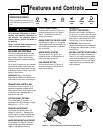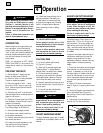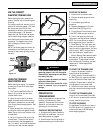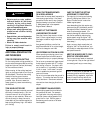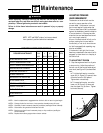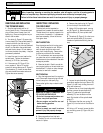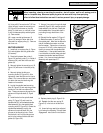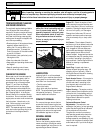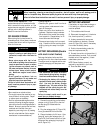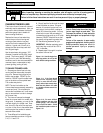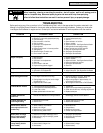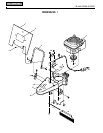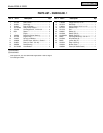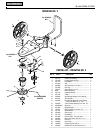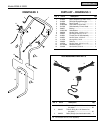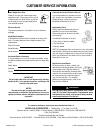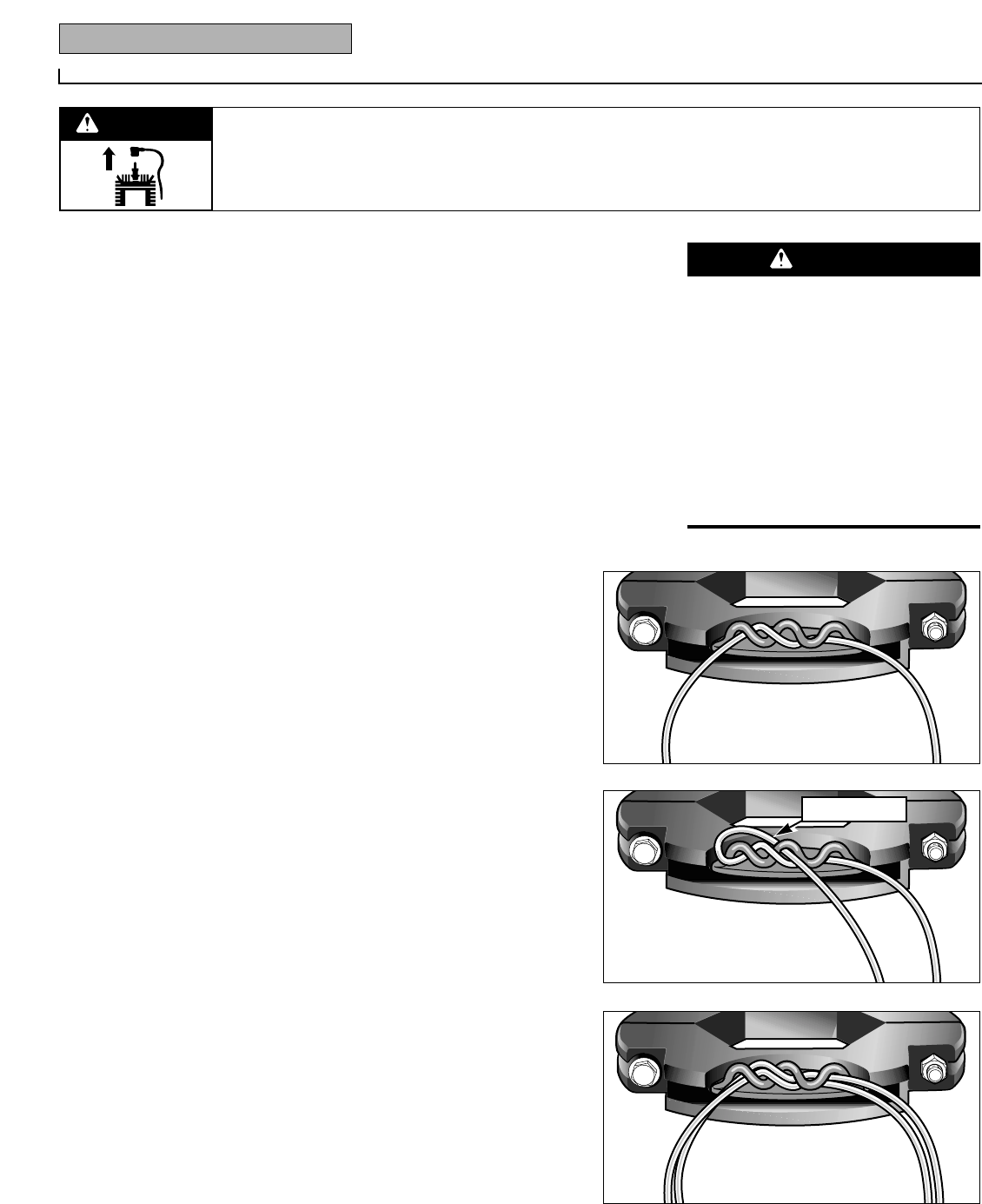
16 Section 5: Maintenance
Before inspecting, cleaning or servicing the machine, shut off engine, wait for all moving parts to
come to a complete stop, disconnect spark plug wire and move wire away from spark plug.
Failure to follow these instructions can result in serious personal injury or property damage.
WARNING
CHANGING TRIMMER LINES
The trimmer lines will wear with use and
eventually require replacement. Also, you
may wish to switch between the thinner
and thicker gauge lines to handle dif-
ferent mowing conditions.
Replace the trimmer lines when they
wear to the point that trimming and
mowing projects take too long and
require too much maneuvering of the
machine. A good rule of thumb is to
change the lines when they reach half
their original length.
Use the extra-heavy duty gauge (.155"
diameter) line when cutting thick, tough
growth. The thinner gauge (.130" diam-
eter) line is for use in less demanding
conditions, and is also recommended for
use near trees or ornamentals to help
prevent girdling (cutting of bark).
TO CHANGE TRIMMER LINES:
1. Stop engine, allow all parts to stop
moving and then disconnect the spark
plug wire. Remove the ignition key on
electric start models. DO NOT tip the
machine. DO NOT touch the metal wear
cup on the bottom of the spindle head.
This surface may be hot.
NOTE: The two line holders on the
trimmer head are permanently secured by
a screw and a nut. Do not attempt to
remove the line holders as it is not neces-
sary to remove them in order to change
the trimmer lines.
2. The trimmer lines can be changed
when the trimmer head is in contact with
the ground. If necessary, you may tip the
unit back slightly for a better view. How-
ever, do not tip the unit all the way back
or motor oil may flow to the exhaust area
and the engine may smoke for several
seconds when started.
3. Three different line installation pat-
terns are available, as shown in Figures
5-10, 5-11 and 5-12.
4. Simply feed the line through the loops
of the line holder as shown. An equal
amount of line should project out from
each side of the line holder, creating an
overall 22" wide cutting swath. You may
offset both trimmer lines somewhat to
increase the cutting swath up to 25" wide.
However, DO NOT offset the line so that
the overall cutting swath is greater than
25". See Warning statement at right.
IMPORTANT: Whether replacing one or
both lines, they must both be .130" or
.155" in diameter.
5. Repeat steps 2 through 4 to replace
the second trimmer line.
Figure 5-10: Use this single line,
easy-loop pattern for all but the
more difficult cutting conditions.
Figure 5-12: For more difficult
cutting conditions, use two of the
thicker gauge (.155" diameter)
lines in each line holder. Follow
the installation pattern shown in
Figure 5-10.
Figure 5-11: If the lines should
loosen while trimming (espe-
cially in more difficult condi-
tions), add a simple reverse loop.
Note that this pattern will result
in a slightly narrower overall cut-
ting swath.
Offsetting the trimmer lines causes the
lines to rotate faster than when they pro-
ject an equal length on each side. This
increases the chance of loose materials
being dislodged and propelled at high
speeds.
Failure of the operator to wear safety
goggles and appropriate clothing and to
keep bystanders away can result in
severe personal injury or property
damage.
WARNING
Reverse Loop



